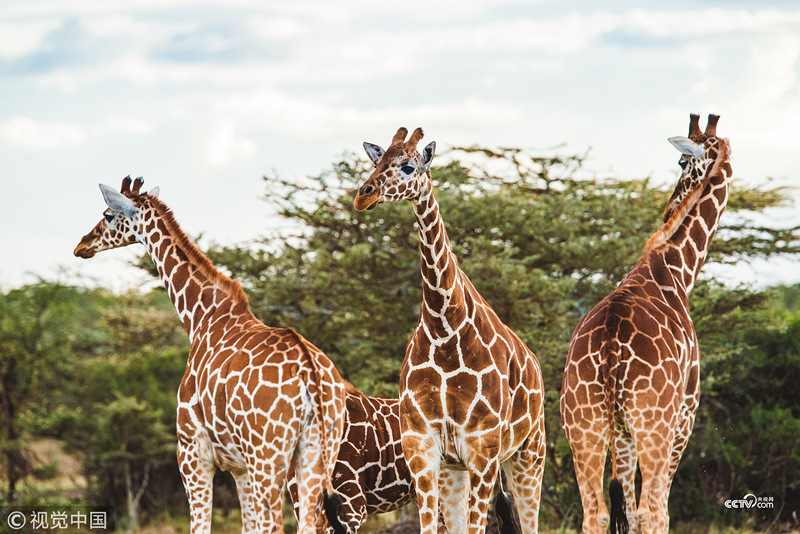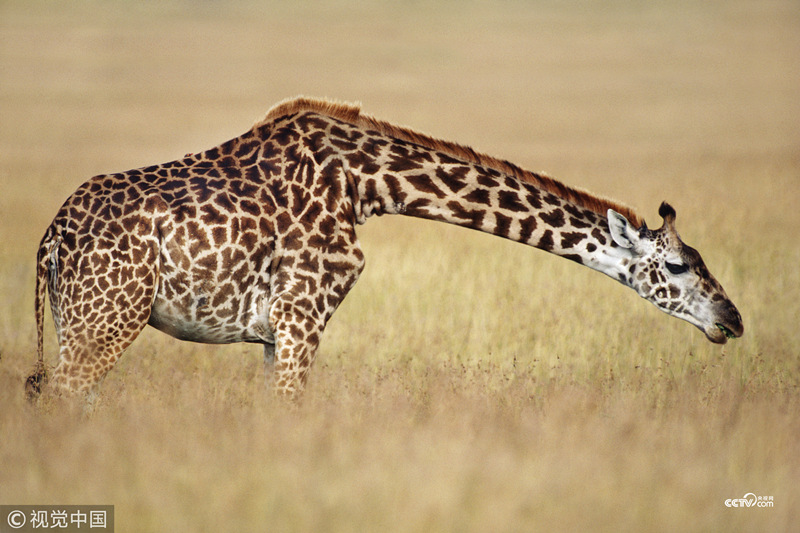By Sibasi Timothy, Feature Writer based in Kampala, Uganda
The giraffe species living in Africa is nearing extinction. The latest research by Giraffe Conservation Foundation (GCF) on life sustainability of giraffes in Africa reveals that there are less than 100,000 giraffes left in Africa.

Giraffes living in Uganda are at most risk. The global positioning tracking system used in the giraffe population survey recorded only 35 giraffes left in Kidepo Valley National Park.
"In Uganda we continue to work closely with the Uganda Wildlife Authority to increase numbers and populations of threatened Nubian giraffe. Boosting existing populations is vital for securing their future in the country." said Steph Fennessy, Director Twiga II Operation for giraffes at GCF in Uganda.
Northern Uganda is home to Nubian giraffes. They have large, rectangular blotches set irregularly against a cream background. The lower legs are noticeably white and not patterned.
A fundraising drive to save giraffes in Uganda has just concluded. "Funds raised during World Giraffe Day on 21 June 2018 will support Operation Twiga III, an important conservation translocation to add more giraffe to the important population in Kidepo Valley National Park, which has recovered from only three individuals in the 1990s." said Fennessy.
In 2010 Nubian giraffes were classified as Endangered by the International Union for Conservation of Nature (IUCN) Red List. In 2015 and 2016, Nubian giraffe were re-introduced into Uganda's Lake Mburo National Park and southern bank of Nile River in Murchison Falls National Park respectively after an absence of over 100 years.
However, it's not only the Nubian giraffe species that are threatened with extinction in Uganda, the West African giraffe specie or Nigerian giraffe is also under the spotlight.
West African giraffe at horizon of extinction
By 1990s, only 49 individual giraffe species had remained in West Africa, despite efforts at the beginning of the 20th Century to distribute West African giraffes from Nigeria to Senegal.
Survivors are protected by the Niger government and their number has risen to approximately 550 individuals, according to GCF research findings.
West African giraffe were classified as Endangered by the IUCN Red List in 2008. They are noticeably light in appearance, which rectangular tan blotches separated by thick, cream-colored lines, often with no patterning on their lower legs.
What is left of the Kordofan giraffe?
It is estimated that fewer than 2,000 individuals survive in the war-ravaged countries of Southern Chad, Central African Republic, Northern Cameroon, and the Democratic Republic of Congo. Most populations were formerly assumed by Kordofan giraffe also known as G. C. peralta, but research has proven incorrect.
"Garamba National Park in the north-eastern Democratic Republic of the Congo borders South Sudan and contains the last remaining population of Kordofan giraffe in the DRC as a result of poaching, the number of Kordofan giraffe have declined in the park." said Fennessy.
Meanwhile, due to the availability of water throughout the year in the east of the park, Zakouma National Park in south-eastern Chad is a sanctuary for biodiversity that, according to GCF, not only provides a refuge for the main surviving Kordofan giraffe population but also comprises around half of the African population of this subspecies. During a GPS count in 2017, 934 giraffe were recorded, most of which were found in the eastern half of the park.
The Kordofan giraffe's spots are pale, large and rectangular without markings below the hocks.
Unlike other regions of Africa where the existence and multiplication of giraffes is threatened, in southern Africa some efforts have been conducted to increase the number of giraffes but much more needs to be done.
Why Cape giraffe are not threatened?
Re-introduction efforts in Southern Africa to increase the numbers of endangered species on the African continent, more so in Mozambique have gone into effect. Officials have stepped up with cross hybrid breeding of the South African or Cape giraffes with Angolan giraffes in South Africa, Botswana, Northeastern Namibia, Southwestern Zambia and Zimbabwe.
There have also been extralimital introductions of South African giraffe across South Africa, Angola, Senegal and Zambia. There are likely more than 39,000 South African giraffe. Their pattern extends all the way down to the legs and is made up of large, uneven and notched spots on a background that is more tan-colored than cream or white.
Kenya, Tanzania and Rwanda hold an isolated population of giraffe specie known as Masai giraffe, however with advent of a tourism boom in Kenya, Tanzania and Rwanda they become more important.
Why an increase of Masai giraffe?
The Masai giraffe range across central and southern Kenya and throughout Tanzania. There is also geographically isolated population in the South Luangwa Valley in Zambia that was assumed to be Thornicroft's giraffe but are genetically identical to Masai giraffe.

Giraffe grazing, Giraffa camelopardalis tippelskirchi, Masai Mara Reserve, Kenya
The Masai giraffe is often noticeably darker. Its blotches are large, dark brown and distinctively vine leaf-shaped with jagged edges, and separated by irregular, creamy brown lines.
Extralimital populations have been translocated to Rwanda. Historically, this is the most populous of the subspecies, now numbering an estimated 32,500 in the wild. Yet, recent reports of poaching would suggest their population is decreasing but thanks to wildlife authorities and tour companies they are protecting them.
(The opinions expressed here do not necessarily reflect the opinions of Panview or CCTV.com. )

Panview offers a new window of understanding the world as well as China through the views, opinions, and analysis of experts. We also welcome outside submissions, so feel free to send in your own editorials to "globalopinion@vip.cntv.cn" for consideration.
















